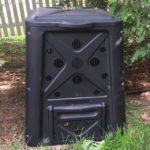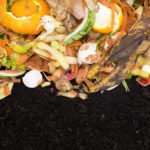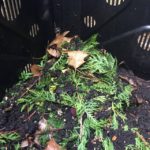While reducing food waste should be the highest priority, there will always be leftover organic materials that need to be disposed of. The best way to deal with organic waste is through composting, which is essentially recycling food waste into organic rich material that can be re-applied to the soil.
Composting prevents food from ending up in landfills, where it slowly degrades and produces methane, a powerful greenhouse gas. Composting also leads to a reduction in the need for chemical fertilizers.
Composting can be done in a variety of ways. Click here for a list of composting options in our area.
Home Composting
 It is easy to start composting at home. Here are a few resources we put together to help you get started.
It is easy to start composting at home. Here are a few resources we put together to help you get started.
Check out our video tutorial below to learn how to get started with backyard composting. Click to read Sustainable Saratoga’s compost guide. Please email us at zerowaste@sustainablesaratoga.org with any questions.
We organize several backyard composting workshops each year, so check back for upcoming events.
The DEC has several good resources:
- https://www.dec.ny.gov/chemical/8799.html
- https://www.dec.ny.gov/docs/materials_minerals_pdf/compost.pdf
Community Composting
Municipal Composting
Grass clippings are filled with nutrients, so it is best to leave this material on our lawn. For those who need to dispose of yard clippings, leaves, and branches, Saratoga Springs collects yard waste. This material is composted and sold to the community for use in their gardens.
Composting Companies

Loving Earth Compost is the only curbside, subscription compost collection business serving the Saratoga area.
Natural Upcycling and FoodScraps360 are two food scrap/organics collection companies in the Capital Region.
Other technologies, like aerobic and anaerobic digestion, can be used to speed up the process.
Compost your grass clippings without any effort!
Leave them on the lawn! Grass clippings are 80% water and contain 2- 4% nitrogen, phosphorus, potassium and other nutrients. Leaving them on the lawn returns these nutrients to the soil, so the grass can use these nutrients instead of applying fertlizers. Leaving grass clippings does not cause thatch – thatch is an accumulation of the “woody” parts of the grass plant: stems, roots and stolons, not the clippings.
